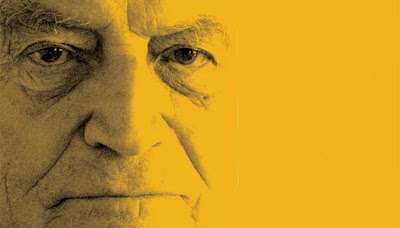
Architect, Argentina
Mario Roberto Alvarez is considered one of the most prominent and prolific
representatives of the rationalist approach to architecture in Argentina. Born in Buenos
Aires on 14 November, 1913, he graduated with a degree in architecture from the
University of Buenos Aires in 1937. He worked first at the Ministry of Public Works and
Encyclopedia of 20th-century architecture 72
later become a municipal architect for Avellaneda City. Alvarez opened his architectural
office in 1947, when the modernist ideas were firmly established in Latin America. Ever
since, his practice has been characterized by the variety, quantity, and solid
professionalism of his work.
His most refined and important contribution is The Municipal Theater General San
Martin, designed in association with Macedonio Oscar Ruiz (1960) and located on
Corrientes Avenue, the area of spectacles and theaters. The facade has a curtain wall that
announces adherence to a functional and rational approach, articulated with a marquee
that makes a subtle reference to the history of the area. The lobby is one of the best
examples of high modernism in Latin America. This space, which echoes some of the
developments in Brazilian modernism at that time, combines tilted columns supporting
the suspended volume of one of the auditoriums. It also incorporates a flying staircase
and a large mural, as well as modernist furniture and rich materials.
The entire complex, with four auditoriums dedicated to experimental theater,
contemporary dance, and chamber music, incorporated the best stage equipment and
technology available at the time. The interior spaces of the auditoriums are characterized
by a calm artistic sensibility that relies on the combination of very few materials while
using elongated, sweeping lines and lighting. The complex was later extended and
connected to the San Martin Cultural Center (1970), also designed by Alvarez. The
cultural center is located in a very dense urban area, and the entrance incorporates a dry
plaza that opens up the space of the old Spanish colonial grid.
The studio also expanded some of the finest cultural institutions of the country, among
them the prestigious Colón Theater (1968) and the Cervantes National Theater (1969),
both in Buenos Aires.
By the 1970s, the firm Alvarez and Associates, had acquired a reputation for
incorporating modern technology in its rational approach to design problems. This
approach was further explored with the SOMISA building (1975), a technological
challenge, as it was the first building in the world completely welded together.
Alvarez was always very conscious of the effect of a building in the environment. This
is exemplified by the Galeria Jardin (1983), a commercial center located on Florida Street
at the core of the city center. The complex has an underground garage, with three levels
of shops and offices, and also includes two towers with offices and apartments. The basic
parti revolves around the idea of opening an internal street, which was unified by two
submerged patios opened up to the sky and to natural light. The complex is linked
visually and functionally by stairs and balconies, thus enriching the urban fabric with this
refuge in the core of the block.
Among several towers designed by Alvarez, one of the most remarkable is the IBM
building (1983). The IBM headquarters is located in the Catalinas Norte area, the
gateway to the metropolis from the estuary of the river. The tower is in the middle of a
hub of relevant buildings from the turn of the century, including corporate headquarters,
monuments, and parks.
The solution is a highly sculptural yet simple type that follows the tripartite model of a
base, a middle, and a top, which exemplifies Alvarez classical affinities. However,
Alvarez incorporates subtle reflections on the theme. The building aesthetic is
characterized by the distinction between the circulation of the areas served. The tower is
related to the site by an elongated, pure platform forming a base. The prism of the tower
Entries A–F 73
is linked to the platform by the elevator shafts’ smaller volume, generating the impression
that the tower is floating. The fenestration recedes and the horizontal bands of concrete
slabs composing each floor give the building its dynamic simplicity. A clean and
powerful entablature ends the composition.
The conscious expression of the structure, care for the programmatic requirements,
and the ascetic elegance of the interiors characterize most of the multistory flats, health
centers, and office buildings designed by Alvarez’s studio. One of the most significant
landmarks in the Buenos Aires skyline is Le Parc tower. Forty-six stories high, it is one
of the tallest towers in South America (1995). Instead of the typical Miesian rectangular
prism used in many of his other projects, Alvarez approaches this structure differently.
The floor plan is expressed in volume through balconies and circulation. The highly
articulated yet restrained facade is the result of interior variations needed to provide sun
and views. The expressive richness of this tower comes from the joints in the exposed
concrete and from the marks left by the shuttering bolts securing the formwork.
Instead of radical transformation, Alvarez’s philosophy has been to explore a limited
set of forms as variations of a theme: to do more with less. His work was immune to the
sweeping changes and explorations of the 1970s and to the notions of fragmentation,
historical allusion, or the search for complexity and richness of meaning. Alvarez’s
production remained involved in solutions that advanced an uncompromising classicist
attitude. His work belongs to a generation that absorbed most of Ludwig Mies van der
Rohe’s contributions and adopted them to a country with a developing economy.
After more than 50 years of professional work, innumerable awards, and many
competitions won, Alvarez’s studio remains committed to a stable, gradual evolution
instead of revolutionary changes in architecture. His extensive work is an accrued
reflection on some of the tenets of high modernism. As with many other rationalist
architects, his practice is an ascetic and rigorous search that aspires to order and
continuity.